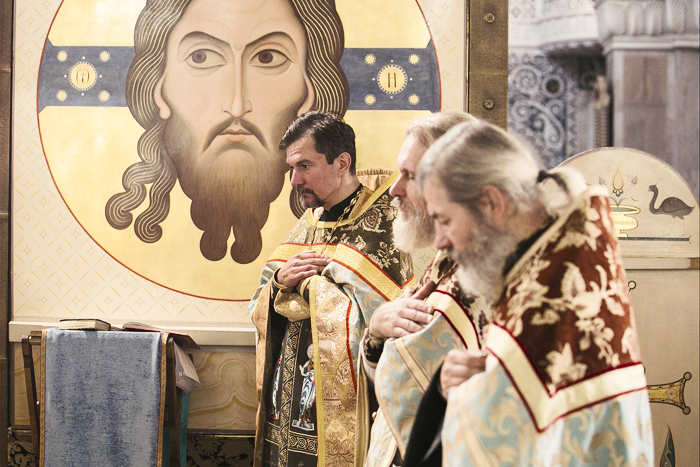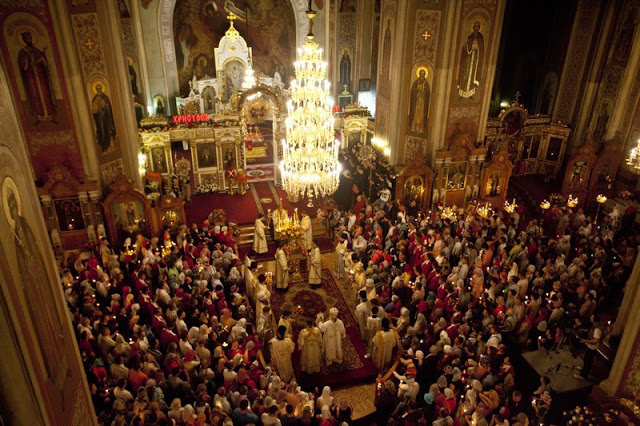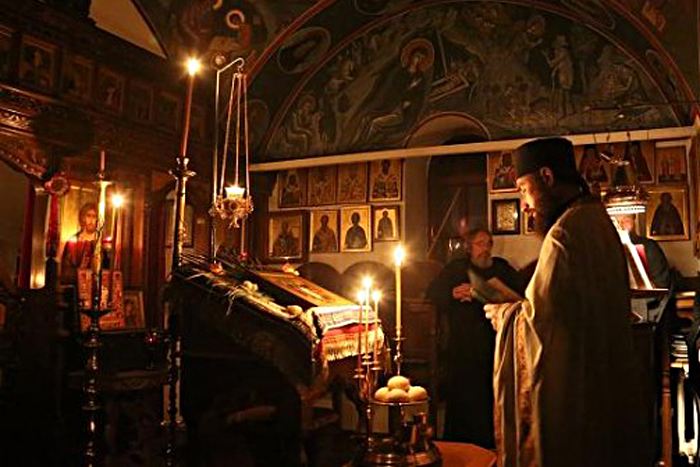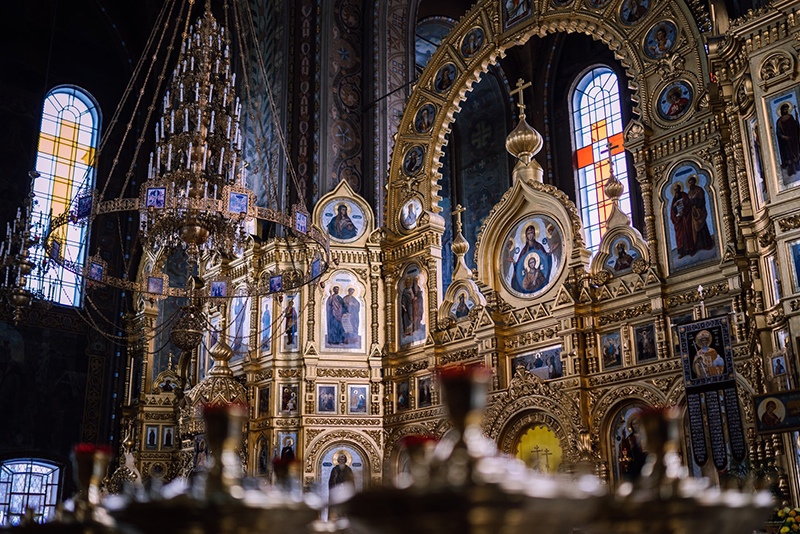
Ecclesiastical objects are full of symbolism. Why is that? Each symbol carries a Christian message and reminds us of Jesus and His Gospel. We live in a world of images and sometimes these images are very anti-Christian. The Church is the best place for the Orthodox symbols that speak to us about God and the true calling of man. One of such objects, rich in Gospel images, is a priest’s phelonion.
We do not know for sure if the liturgical garments were used in the early days of the Church. It is possible that the divine services were celebrated in the garments worn in the Roman Empire, and that the only difference might be an embroidered sign of the cross. However, the Church has always been aware of its identity as the true Israel, and given that the servants of the Tabernacle had worn special garments in the Old Testament, the Christian clergy also began to use them, especially after the end of the persecution. The Blessed Jerome of Stridon (†420) wrote that priests were to begin the Sacraments in special bright robes and with a pure conscience.
The phelonion, a large round piece of cloth with a cutout for the head and without sleeves, became the main liturgical garment of the clergy. The phelonion is mentioned by the apostle Paul: “The cloke that I left at Troas with Carpus, when thou comest, bring with thee” (2 Timothy 4:13). Whether it was a liturgical phelonion or one that the apostle used as a traveling cloak during his missionary journeys, we know from the Tradition that the Apostle James the Righteous wore a special linen garment, like the Old Testament high priest, so it is possible that St. Paul also used his phelonion liturgically.
The phelonion does not have sleeves, because it symbolizes a sack (a simple bag with a hole for the head), in which the Old Testament prophets were dressed for fasting and repentance. Thus, a phelonion reminds the priest that one should never forget about being remorseful for his sins and remembering the times of the Old Testament when the saving grace had not yet been granted to people. The sackcloth is the garment of ascetics, that is why every priest is called to be a skillful ascetic capable not only of fighting the sin, but also of guiding other people in this struggle.
A phelonion also represents the scarlet robe in which the soldiers clothed the Savior as a way of ridiculing him. The crimson cloak is an imperial garment and only the king and members of the royal family could wear it. Such a right was also granted to their closest servants and their personal guards. Every Christian, redeemed by the Lord and restored to his or her royal rank, becomes a son or a daughter of the King of Heaven by grace, and especially the one whom the Lord has exclusively blessed with the all-healing and replenishing grace of priesthood. The phelonion is supposed to show this royal dignity of the priest. By wearing a phelonion, especially a red one, the priest is called not only to remind himself and the congregation of the blood shed for us by the Savior, but also of the sufferings of the martyrs who proved their allegiance to Christ even to death.
The priestly robe has almost always been white to indicate purity, divine splendor and glory, because God is the Light and is clothed with light like a cloak, reminds Saint Symeon of Thessalonica. A robe, especially in its ancient design, covers the whole body of the priest, showing that he is fully in God’s hands and under His protection. When putting on the phelonion, the priest reads a prayer of joy, which must remain in the soul of every believer, as well as a prayer for putting on the garment of truth, that is, Christ Himself, whom we put on at the day of our baptism.
There is almost always a cross on the upper part of the phelonion on the back, reminiscent of the good yoke of Christ that the presbyter is supposed to carry, and an eight-pointed star is usually embroidered at the bottom, reminiscent not only of the Bethlehem star, but also of the legacy of the Old Testament in the Church. According to Sergei Bulgakov (Handbook for Clergy), the eight-pointed star also means “the eighth aeon – the onset of the Kingdom of Heaven”, and the priest is a minister of the Sacraments of the Kingdom. The Star and the Cross preach of the greatest humility of the Lord, who, for the sake of our salvation, was willing to exhaust Himself, to receive human flesh and become a child, and then crucify this flesh on the Cross, in order to exude immortality to the human race from His Rib. This divine blood that Christ shed on the Cross, as well as the wounds of whipping and the marks of the chains, are symbolically depicted by galloons.
The priest at the Liturgy is the image of Christ, the crucified and despised Son of God, who was resurrected by the power of His divinity, and whose wounds were transformed into radiance and glory. The priest is a servant of the Eucharist, the Last Supper and the union of the Lamb of God with his people. The Liturgy is the wedding feast to which Christ calls us and, as the Lord asks in the parable, Friend, how camest thou in hither not having a wedding garment? (Matthew 22:12). A priestly vestment is intended as a reminder to every one who comes into the Church about the feast and the Person to whose house he came. With this in mind, it is necessary to purify the garments of our souls in order to eat the Paschal Lamb properly.



